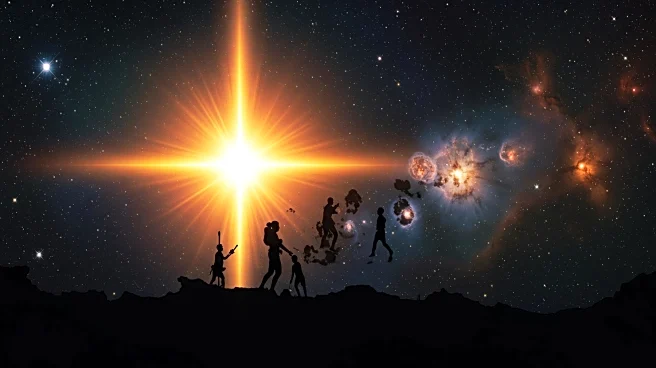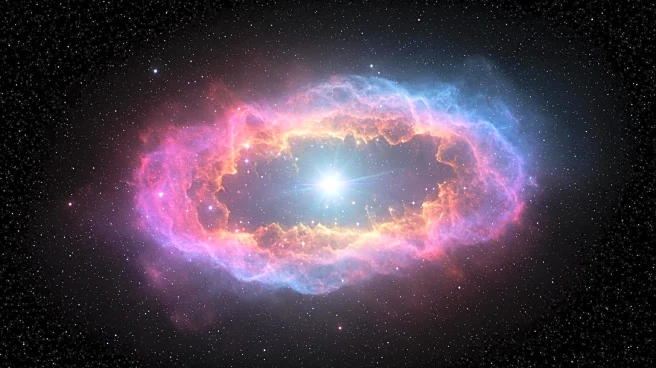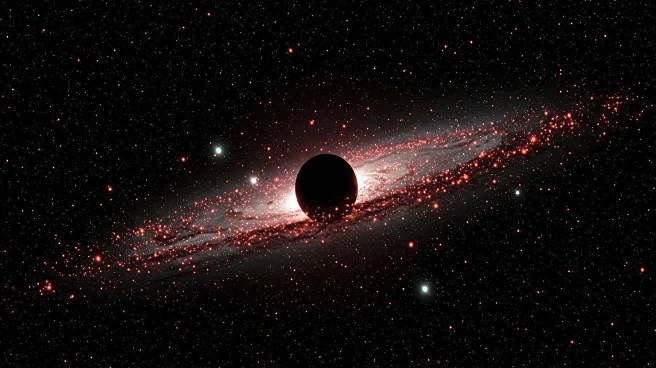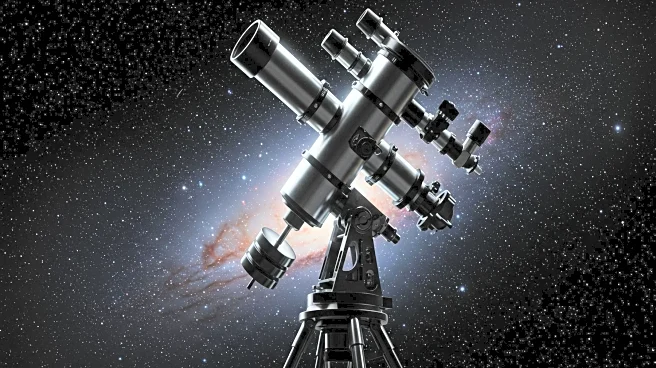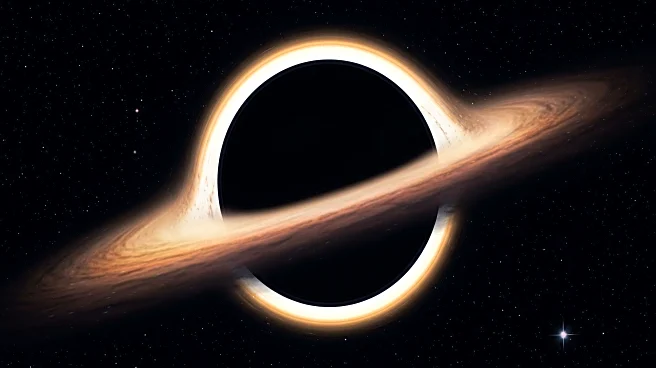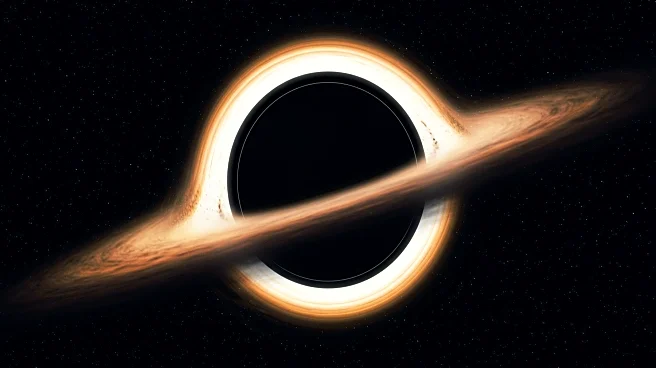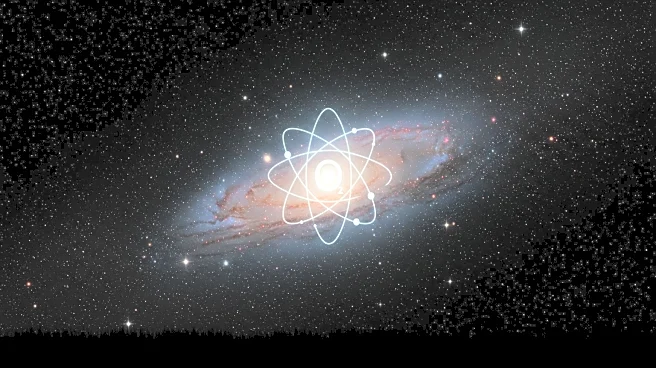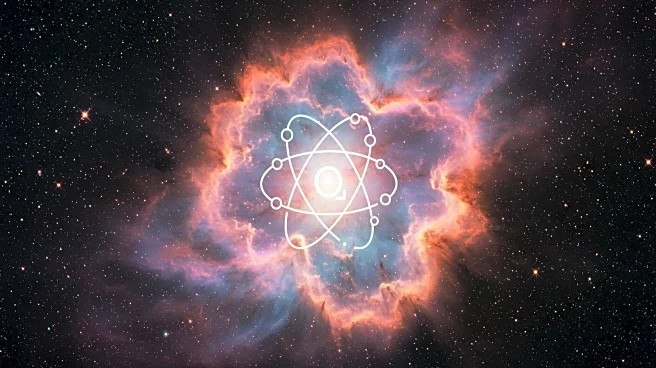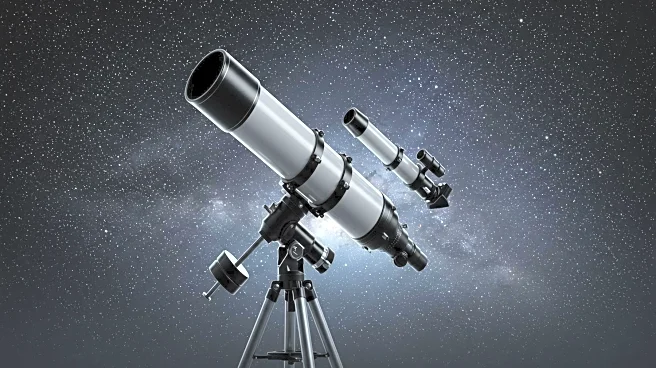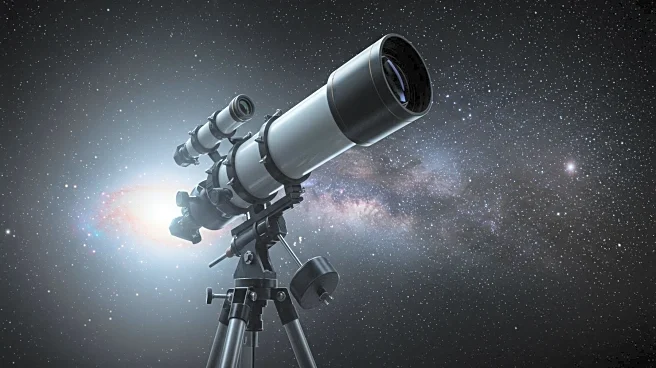What is the story about?
What's Happening?
Astronomers have observed the oldest fast radio burst (FRB) ever seen, originating from a galaxy 3 billion years after the Big Bang. This FRB, named 20240304B, was detected using the MeerKAT radio telescope and followed up with observations from the James Webb Space Telescope. The burst came from a small, faint galaxy that formed its stars quickly during a period known as cosmic noon, when star formation rates were at their peak. The FRB's discovery provides a unique opportunity to map ionized gas between galaxies, which is crucial for understanding the formation of larger cosmic structures.
Why It's Important?
FRBs are significant because they illuminate ionized gas, which constitutes the majority of matter in the universe. Understanding its distribution is key to comprehending how stars and galaxies form. The observation of FRB 20240304B during a pivotal time in the universe's history allows astronomers to build a timeline of star formation and ionization processes. This research could enhance our understanding of cosmic evolution and the role of magnetars in producing FRBs.
Beyond the Headlines
The study of FRBs like 20240304B offers insights into the universe's early conditions, potentially revealing the processes that led to the formation of stars and galaxies. The ability to map ionized gas through FRBs could lead to breakthroughs in understanding cosmic magnetic fields and the distribution of matter in the universe. This research highlights the importance of advanced telescopes in exploring the universe's hidden aspects.
AI Generated Content
Do you find this article useful?
